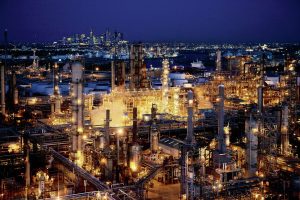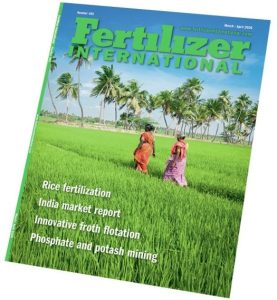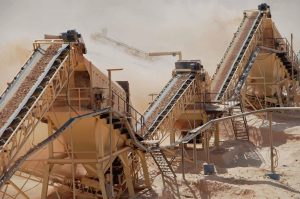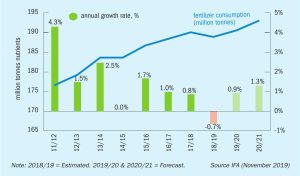
North American sulphur
Although North America is no longer the world’s largest sulphur exporter, it remains a major producer and consumer, and there are still significant exports and imports of sulphur into and out of the region.

Although North America is no longer the world’s largest sulphur exporter, it remains a major producer and consumer, and there are still significant exports and imports of sulphur into and out of the region.
Charlotte Hebebrand, Director General of the International Fertilizer Industry Association (IFA), will end her term with the organisation on May 1st. IFA’s Senior Director of the Agriculture Service, Patrick Heffer, will serve as interim Director General as of 1 May, until a new permanent Director General can be proposed by IFA’s Board of Directors and approved by the membership at the organisation’s General Meeting, with the aim of having a new person in place by July.

The impact of coronavirus on both supply and demand continues to provide considerable uncertainty to the market. With much of Hubei province on lockdown, and a corresponding reduction in ammonia demand for DAP production, Chinese imports appear to be down, pushing more ammonia onto the international market and creating generally bearish sentiment.

At the Nitrogen+Syngas Conference 2020, held in The Hague, Netherlands, Haldor Topsoe launched its new TITAN ™ series of steam reforming catalysts. The company says that the new series, which consists of the RC-67 TITAN and RK-500 TITAN catalysts, offers improved performance and longer catalyst lifetime thanks to the hibonite-rich composition. The addition of titanium promoters adds exceptional mechanical strength while a seven-hole cylindrical shape yields both a very low pressure drop and a high surface area. Pressure drop build-ups in syngas plants can cause unscheduled downtime and cost millions of dollars, while thermal instability during operation can lead to operational risk and reduce plant lifetime. Topsoe says that the catalysts can mitigate these risks, ensuring lower operating costs, increased profit margins, and reduced energy usage.

The end of winter each year is always a good time to reflect on the state of the fertilizer industry. This year was no exception with the usual flurry of fourth-quarter and full-year results for 2019 emerging mid-February. Less of a flurry, actually, more of an avalanche.
The grave economic and human health consequences of the global spread of coronavirus (Covid-19) deepened in March.
Charlotte Hebebrand, director general of the International Fertilizer Association (IFA), is to step down at the beginning of May, after more than seven years in the role.

After a poor 2019, when global demand contracted by nearly 2.5%, phosphate markets are expected to rebound in 2020. Saudi Arabia and Morocco dominate new capacity additions while India and Brazil continue to be the key importers. US and Chinese production is in slow decline, meanwhile.

Andy Hemphill , senior editor for potash at ICIS Fertilizers, takes a deep dive into the potash market. Potash producers are praying that tight capacity control and resurgent demand will curb the current bearish price trend.

We look ahead at fertilizer industry prospects for the next 12 months, including supply and demand growth, and explore the key agricultural, macroeconomic and geopolitical drivers likely to shape the market during 2020.